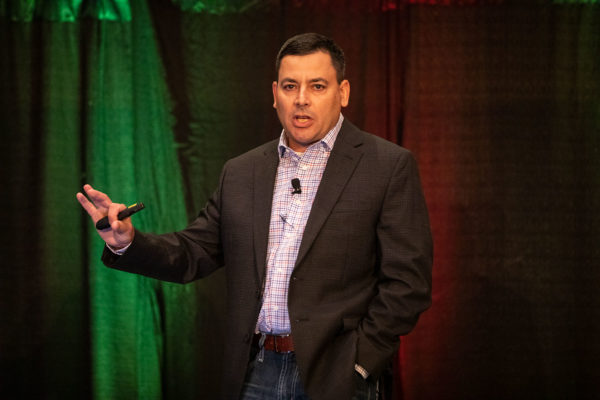 Precision livestock farming or PLF is predictive. Producers can make management decisions that are predictive of outcomes. Dr. Justin Sexten, Performance Livestock Analytics vice president of strategy, gave his presentation titled “The Role of Technology in the Beef Industry” during the Beef Improvement Federation (BIF) Symposium June 24 in Des Moines, Iowa. Sexten approached his presentation from the perspective of the 2,200 operations and 3.5 million head of cattle Performance Beef integrates feed, financial and health data on across the world every morning.
Precision livestock farming or PLF is predictive. Producers can make management decisions that are predictive of outcomes. Dr. Justin Sexten, Performance Livestock Analytics vice president of strategy, gave his presentation titled “The Role of Technology in the Beef Industry” during the Beef Improvement Federation (BIF) Symposium June 24 in Des Moines, Iowa. Sexten approached his presentation from the perspective of the 2,200 operations and 3.5 million head of cattle Performance Beef integrates feed, financial and health data on across the world every morning.
Through genetic potential, sensors from the environment, and actual practices, producers can predict when an animal is going to finished or when the animal is going to be optimum in its marketing. The goal is to produce more high-quality beef with less resources using the restricted labor resources that we have on farm. Scale is the easiest way to drive out inefficiencies in an operation. As operations scale, they use technology to address the challenge of fewer people and higher number of animals.
“There’s two avenues of PLF described in the livestock space,” Sexten explained. “The first one, is the application of process engineering to an animal and means that you are constantly monitoring that animal for deviations from normal. This is often referred to as diagnostic, it is very singular in its nature and event, but it is a diagnostic future looking preventative. Another aspect of PLF is the massive collection of phenotype data in a passive manner. One of the challenges we think about from a genetic improvement standpoint is continuing is getting producers to submit phenotype data because it must inform the genetic predictions down the road. PLF offers the opportunity to take information, move it to the cloud and digitize it. PLF digitizing data and allowing that management data to be moved is one of the real opportunities that we see from a technology standpoint.”
Precision animal management
Sexten asked attendees: which is more important to manage, the average or the variation? Lot, pen and pasture-based management assumes each animal is of average weight, average daily gain, forage consumption and supplement conversion. Variation has varied “value” depending on the segment you operate in. Seedstock producers use variation to advance, commercial cow-calf operations realize variation as a cost in marketing and management, the stocker business model is built on consolidating variation, and feedyards apply standardized management to larger groups.
“As we move down the supply chain, managing that variation comes at a cost,” he said. “It is the penalization of a group where we are trying to minimize variation, but we market cattle on the average.”
Integrated technology opportunities
New technology solutions can capture the value of normal management, enhance labor efficiency, improve animal performance and increase future value proposition. Every technology solution implemented into an operation becomes part of the producer’s daily workflow. PLF solves for the growing list of sustainability metrics suppliers increasingly demand.
“PLF offers the beef industry the opportunity to improve animal productivity and address growing labor issues while fulfilling consumer demand for increased food system traceability and sustainability,” Sexten adds. “The technology to accomplish production goals exists in a number of current solutions. When the marketplace is willing to pay for adoption, producers will rapidly solve for the execution barriers.”
To watch the full presentation, visit https://youtu.be/UNygk3q3LHA. For more information about this year’s symposium, including additional presentations and award winners, visit https://beefimprovement.org/symposium.
